Proven Ways You Can Repair Virus-Infected Video Files
If you’ve been one of the unlucky few to experience a virus infection on your computer, you know about the havoc these malicious apps can wreak and the damage they can cause to your files. Seeing corrupted and infected files can be devastating, even more so if the virus infects your precious video memories.
That’s why today, we’ll dive deeper into viruses, their types, and what they do. Moreover, we’ll show you how to repair virus-infected video files with three different methods and teach you how to prevent future infections. Let’s go through each step in detail below.
How Computer Viruses Work

Computer viruses are malicious applications that have been infecting computers since the 1970s. These programs often replicate themselves to cause maximum damage and spread on external devices or networks, hijacking files, attaching themselves to other apps, and stealing sensitive data.
More often than not, these malicious apps infect your PC by appearing like genuine apps or trustworthy emails and links. From there on, they spread like wildfire, infecting what they can, slowing computers down, and causing OS damage. Some viruses may also nest themselves and hide, awaiting instructions.
Types of Computer Viruses and What They Do

Now that we know what viruses are and how they work, we can dive deeper into the most common types and how they wreak havoc on your PC. Below is a list of the nine categories of computer viruses.
- File Infector – When you think of a computer virus spreading, you’re likely imagining a file infector, which injects malicious code into vital operating system files and other data like videos;
- Boot Sector Virus (Rootkit) – Arguably the most violent virus type and often spread through USBs, rootkits nest in your PC’s boot sector, rendering your computer unusable once activated;
- Browser Hijacker – Using your web browser, this virus type changes your settings and URL, navigating you to phishing websites and stealing your data;
- Direct Action Virus – It’s likely the type of virus you think of, as it represents an executable file (.exe) that you double-click, and it infects your PC;
- Resident Virus – This type of malware sits in your memory and waits for further instructions from whoever infected your PC;
- Web Scripts – Such programs penetrate the web browser’s defenses, allowing bad players to run code on your device;
- Polymorphic Virus – As the name suggests, these viruses use polymorphic code, which constantly changes, allowing them to stay undetected;
- Macro Virus – This tiny malware type uses Microsoft Office macros to download additional infections and wreak havoc;
- Multipartite Virus – Such viruses copy themselves to spread over the network and inject malicious code into critical files.
Although these are the nine most common types of viruses, other types may also exist as hackers are constantly upping their game and evolving viruses. Luckily, most of these are removable.
Using Wondershare Repairit Video Repair Tool (Desktop)
Virus-infected videos are nothing to fear when you have the right tool in your arsenal, and Wondershare Repairit is one such software. Besides handling corrupted and broken videos effortlessly, Wondershare Repairit’s Video Repair Tool for Windows and Macs can quickly repair virus-infected video files.
In addition to supporting 20+ video formats like MOV, M4V, MKV, 3GP, FLV, MP4, M2TS, MTS, AVI, RAW and more, Repairit’s Video Repair tool can also repair multi-format videos simultaneously, and all of that in three simple steps.
The simple, clean, and elegant user interface makes using the desktop app a piece of cake. At the same time, the process enables users to eliminate virus infections within minutes, restoring their precious video memories. Below is a step-by-step guide to using the Wondershare Repairit Desktop app:
Step 1: Start the Wondershare Repairit, choose Video Repair on the left, and click Add to import virus-infected videos.

Step 2: Click the Repair button to start the repair process.

Step 3: Once the repair process is completed, you can check the quality of the repaired video files by clicking Preview.
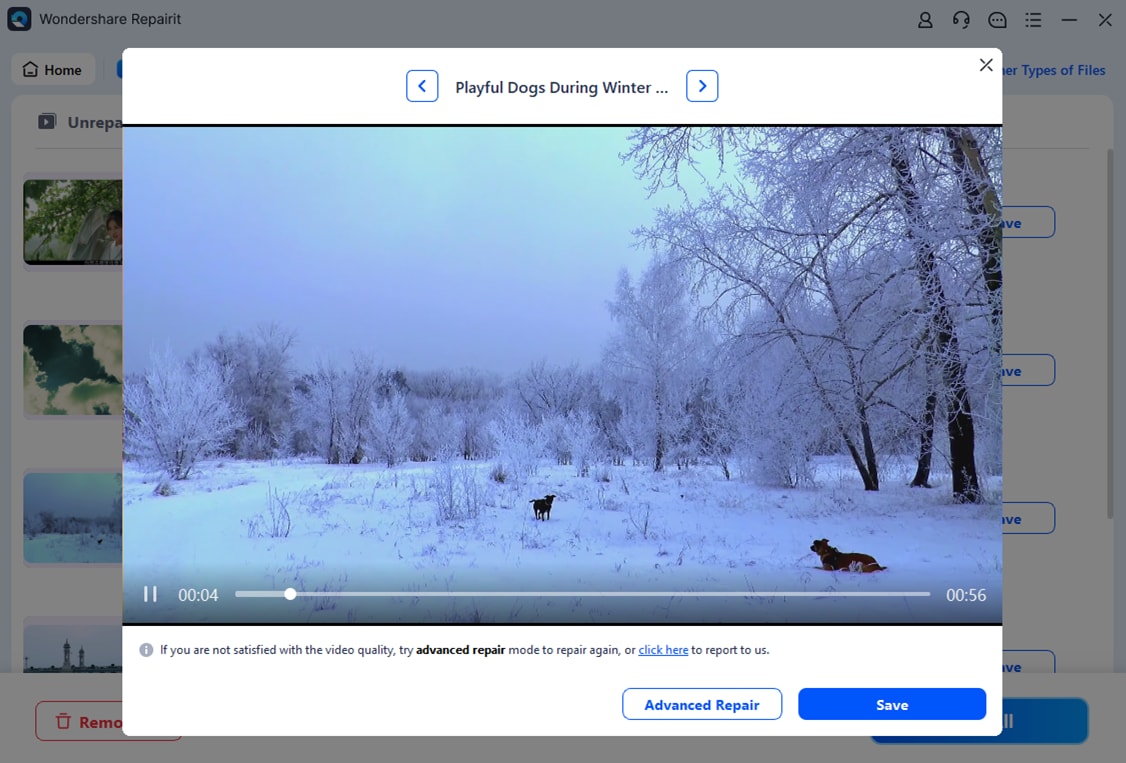
Step 4: If the files are heavily infected and corrupted, then choosing Advanced Repair and adding a sample video from the same device and settings can significantly help the repair process.
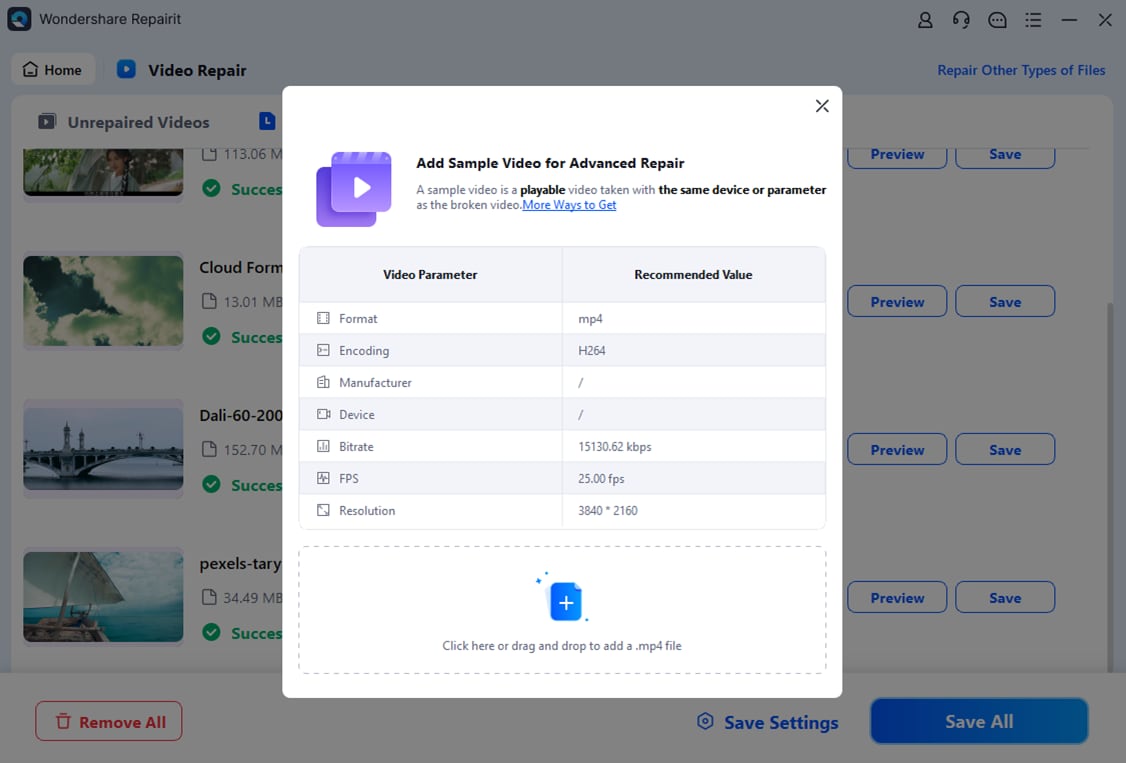
Step 5: If you’re satisfied with the repairs, click Save All to save the repaired video files to your computer.
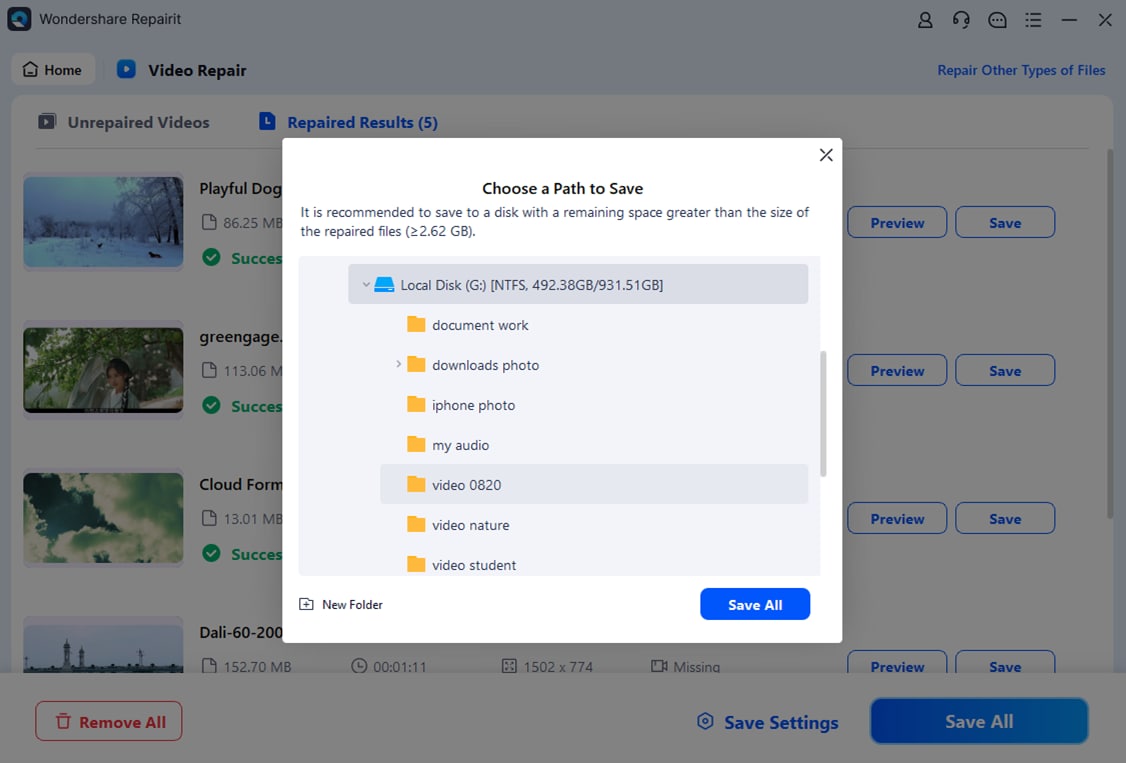
This video will provide a step-by-step guide on how to repair virus affected video files.
It’s worth noting that Wondershare Repairit also has an online version, which functions similarly to the desktop app. The differences between the desktop app and the online service exist, like the number of supported video formats, file size limit, and the number of videos you can repair each month when using the Online Video Repair tool.
However, the online version is still terrific at what it does, so let’s see it in action.
Repair Virus-Infected Video Files Online
If you want to repair your video files quickly and efficiently, Repairit’s Online Video Repair tool is the perfect option. You can access it easily on any device with a web browser. Using it is as simple as the desktop app and only requires three simple steps. We’ve also included step-by-step instructions for your convenience:
Step 1: Open a web browser and navigate to the Wondershare Repairit Online Video Repair.
Step 2: Click the Add button to upload virus-infected videos.
Step 3: Commence the repair by clicking the Repair button.
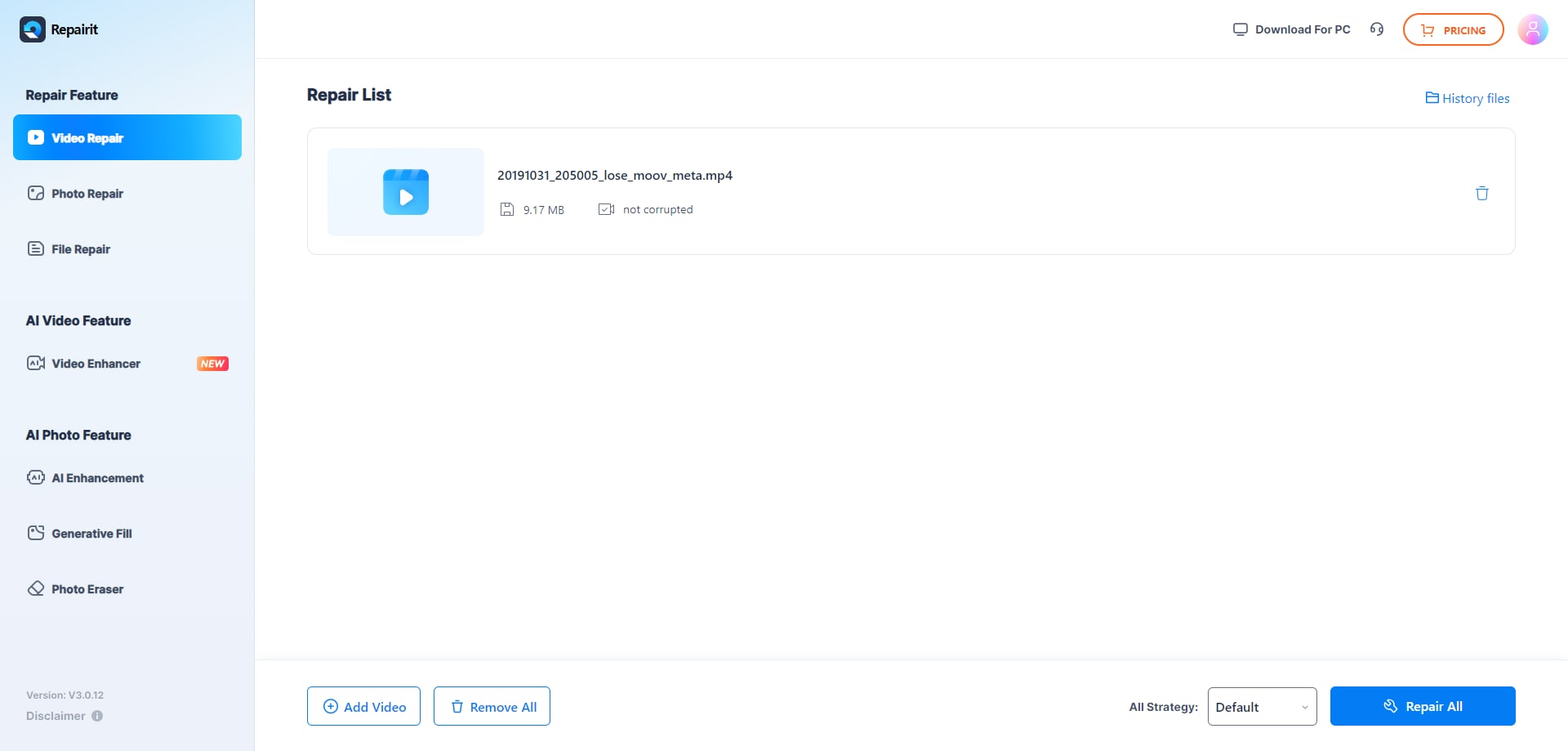
Step 4: Preview the repaired video files by clicking the Play/Preview button next to the video.
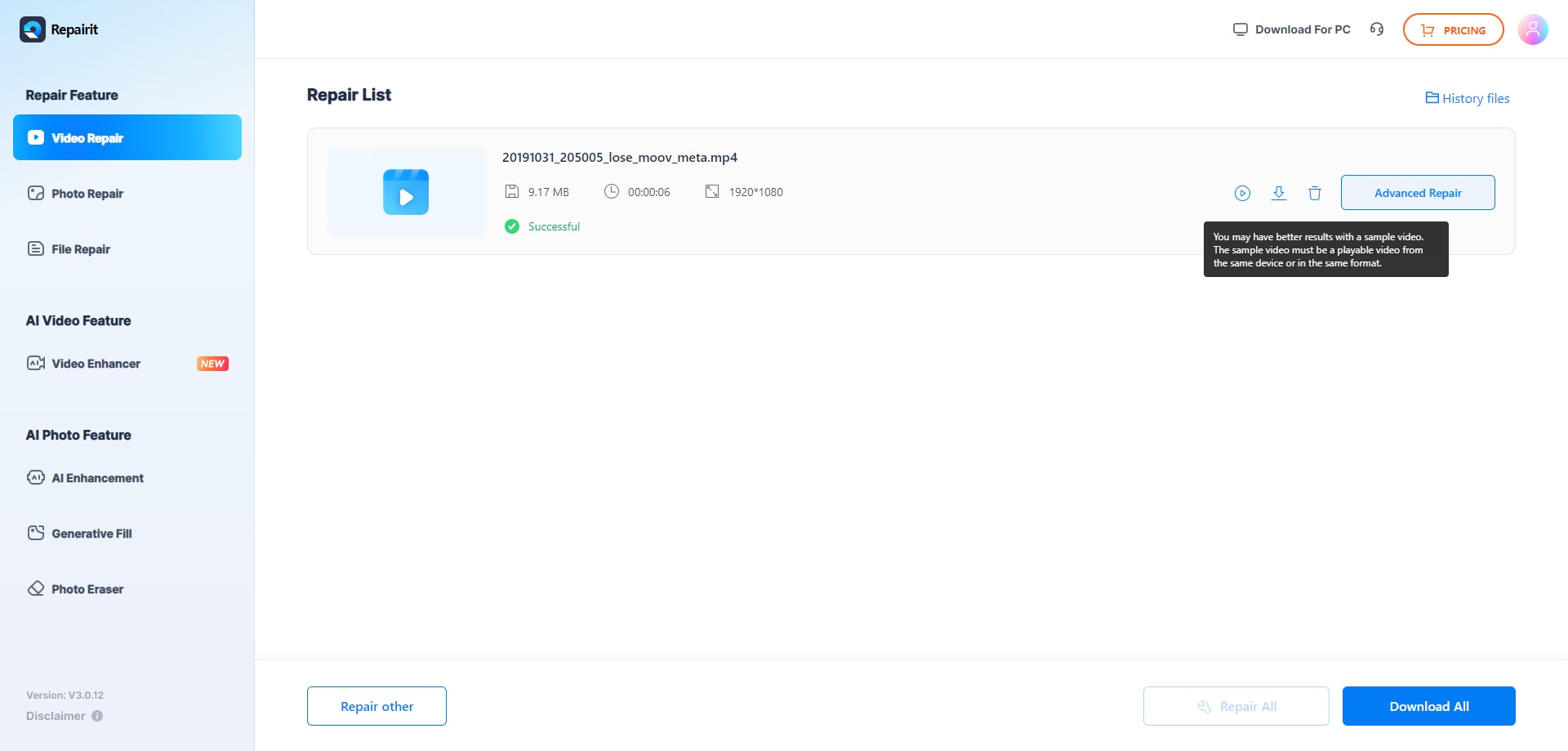
Step 5: If you’re happy with how the video turned out, click the Download All button to save the repaired files to a safe location.
Apart from the three differences mentioned above, the Repairit Desktop app and the Repairit Online Video Repair service are similar. Both are excellent at dealing with virus infections and repairing infected videos, and both tools use the same repair process and algorithms and require identical steps.
Using VLC to Repair Virus-Infected Video Files
While primarily a tremendous media player, VLC is also an excellent tool for fixing video errors, and it can even repair virus-infected video files. The app’s Convert / Save feature allows users to convert video files from one format to another, fixing issues and eliminating viruses in the conversion process.
Although you shouldn’t expect miracles from it, VLC is undoubtedly worth trying. The app is entirely free since it’s open-source, making it a viable option to repair virus-infected video files on a budget. Here’s how you can try it:
Step 1: Launch VLC, and go into Tools > Preferences.

Step 2: Navigate to the Input / Codecs tab and select the Always fix option from the dropdown menu next to the Damaged or incomplete AVI file.

Step 3: Hit Save, tap the Media button, and click Convert / Save.

Step 4: Hit Add to import the virus-infected video files.

Step 5: Tap Convert / Save and choose a format by clicking on Profile.

Step 6: Specify where to save the converted files by clicking Browse under Destination and then clicking Start.
Once converted, your virus-infected video files should be virus-free now. However, it’s worth noting that the VLC media player isn’t a dedicated video repair tool. While it can handle minor issues, errors, and infections, it won’t always be successful.
How to Prevent Future Virus Infections
After eliminating the threat and repairing virus-infected video files, you’ll likely want to take some precautions and ensure the same doesn’t happen again. Therefore, we’ve included a few tips on protecting your PC and data and preventing future virus infections.
- Protect your Wi-Fi network with a strong encryption and password;
- Use different and secure passwords for apps and websites;
- Regularly back up your vital data with UBackit;
- Keep your operating system up to date;
- Install and regularly update an antivirus software;
- Don’t click on suspicious links or emails;
- Carefully check the URLs you’re visiting.
Incorporating these tips into your daily computer usage will decrease your chances of infection by a significant margin. If they happen again, you know what to do and how to repair your files.
Conclusion
Viruses can cause chaos on your PC, and the infection can often spread on vital data. It’s even more frustrating when a virus infects your video files and precious memories and causes corruption.
You shouldn’t immediately go into deletion mode, though, as there are dedicated repair tools that can help. For example, the VLC media player can sometimes eliminate file corruption and repair virus-infected video files. However, it’s still a media player at its core and doesn’t do miracles.
Instead, you can use a dedicated video repair tool like Wondershare Repairit, which is highly recommended since it was created for it, and we’ve shown you how to use both the Desktop and the Online Repair versions. Try it now to quickly repair your damaged video files and recover your lost memories.
People Also Ask
-
Can a video file be infected by a virus?
Yes, video files themselves typically don’t contain viruses, but they can be used as carriers. Malicious code can be hidden in video file containers or paired with exploits that trigger when the video is played in vulnerable software. -
How do I repair corrupted video files after a virus attack?
To repair corrupted videos after a virus infection, use a reliable repair tool like Wondershare Repairit or VLC media player. These tools can analyze damaged files and restore playable versions. Always ensure your system is virus-free before attempting repairs. -
What to do when troubleshooting infected work files that won’t open?
First, scan your PC with an updated antivirus to remove any malware. Next, try using a file repair tool like Repairit for documents or videos. Avoid opening infected files directly and always work on copies after cleaning the system.
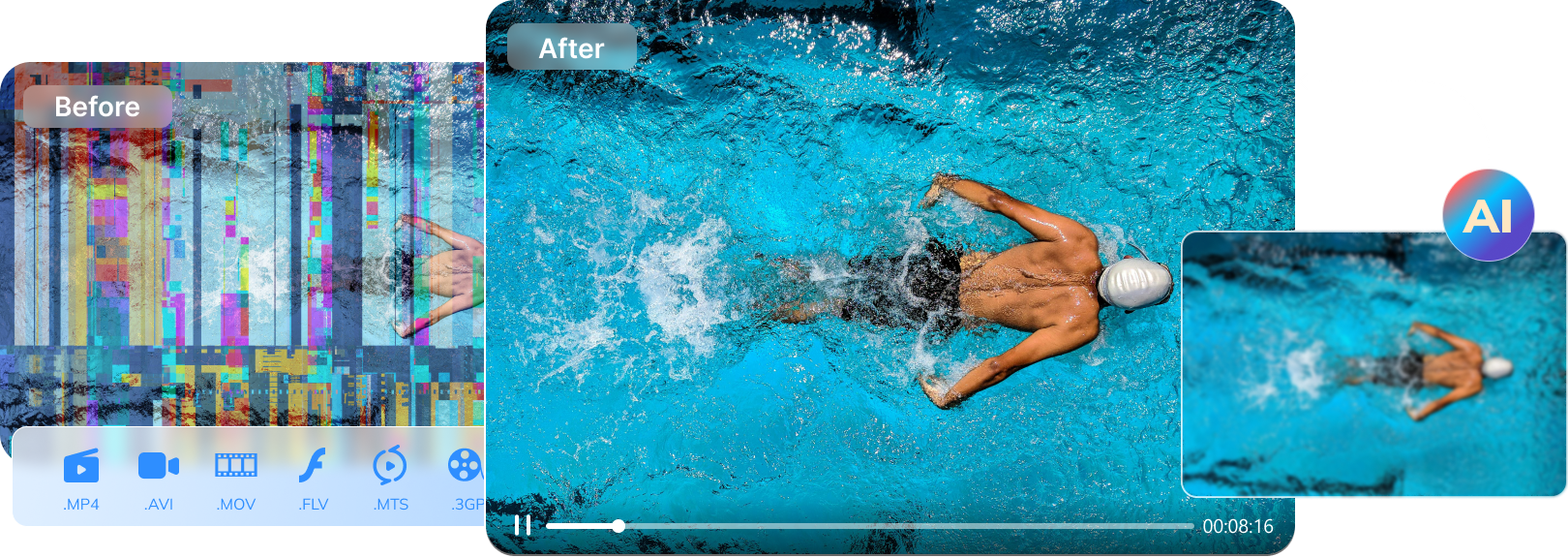


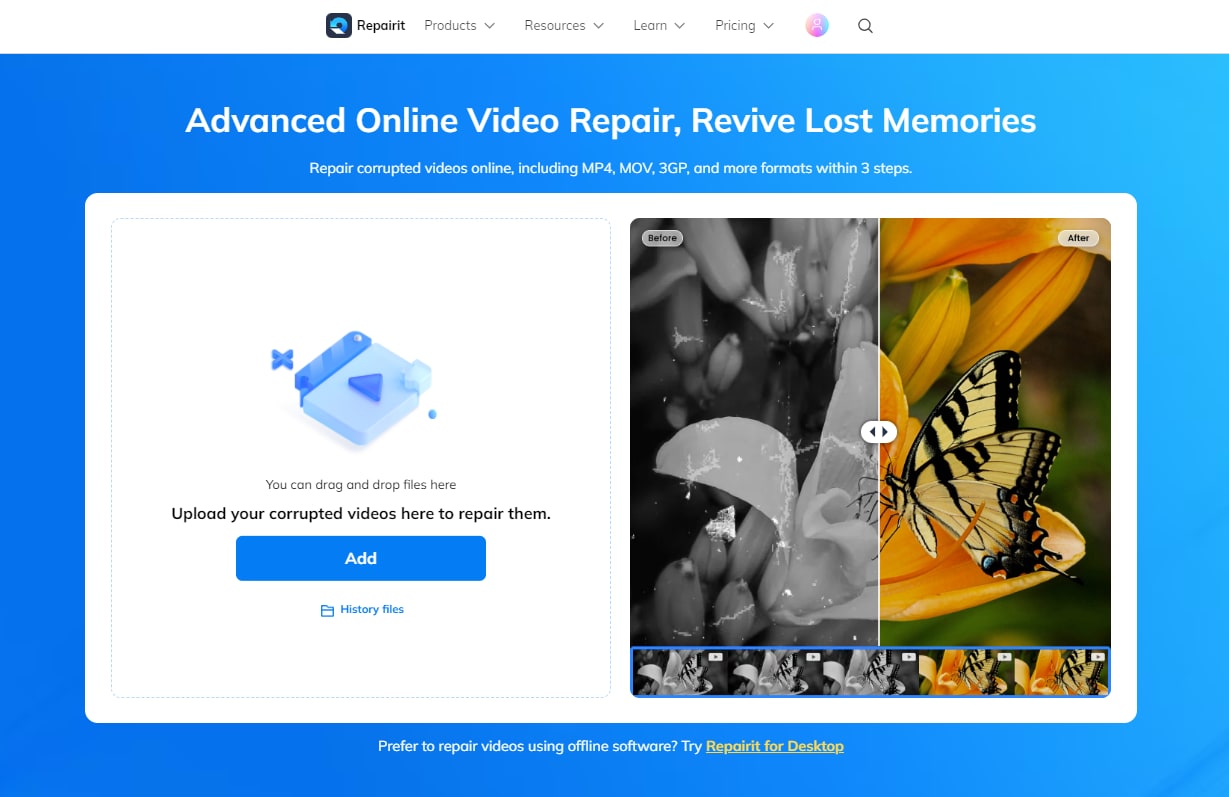
 ChatGPT
ChatGPT
 Perplexity
Perplexity
 Google AI Mode
Google AI Mode
 Grok
Grok
